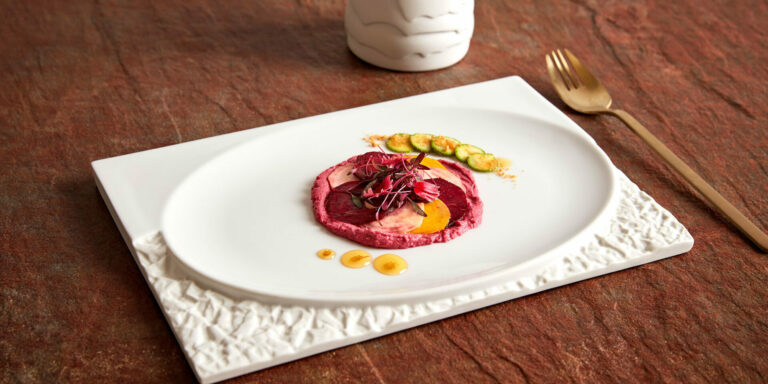
Menu

On our last blog article, we gave you a note of the beginnings of the gastronomic tradition, with emphasis on French haute cuisine. We spoke about the overuse of spices, as a sign of ostentation, and the transition to fresher solutions: herbs.
The importance of French gastronomic tradition and its worldwide influence is undoubtedly indisputable. Today, we invite you to continue traveling with us, by accompanying gastronomic evolutions throughout the 17th and 18th centuries.
Cooking during the 17th century
Many new things have marked this period, gastronomically speaking. The introduction of new ingredients has led to the development of new recipes and techniques. The importance of French cuisine in history was, in this context, unavoidable.
We highlight the broths, currently considered the basis of almost everything around Haute Cuisine. Originally they were made out from several types of meat (cow, goat or poultry) and seasoned with aromatic herbs. Several techniques were used in order to thicken them, such as the addition of wheat or almond flour.
Nowadays, they comprise the first lesson learned at cuisine schools and they can incorporate various ingredients. Many current chefs strive to in order to get unique flavours from their broths, based on meat, fish or vegetables.
Gastronomic tradition in the orchard
The 17th century has also shown some changes across vegetable consumption. Root vegetables, such as potatoes, turnips, and carrots, previously scorned by the upper classes, came into fashion.
A growing interest, around the use of fresh ingredients, also brought more fruit onto the king’s table. The most colourful and appetizing pieces were often arranged in impressive pyramids or presented in huge baskets. The end of the meal could also be marked by refreshing fruit salads, another innovation during that period.
By then, gardens, orchards and vegetable cultivation got notoriously in vogue and they became part of gastronomic tradition. Asparagus, peas and artichokes, for example, became quite popular amongst the aristocratic elite.
Salads and various dishes were served, in which vegetables, fruits and other fresh elements were combined. But the increase in fruit consumption has brought, with it, other novelties: the first jams, jellies and marmalades appeared.
Also, during the 17th century, the first mousses were produced. Their light texture made them widely appreciated, as they allowed to minimize the act (considered as inelegant) of chewing.
Through the use of elaborated and laborious techniques, it appeared the puff pastry, whose recipe has reached our time, almost unchanged. Also, the consumption of certain drinks changed in the world gastronomic tradition. Tea, coffee, and chocolate started appearing at the table, on the most special occasions.
Around the 18th Century’s table
It were, not only, dishes and ingredients, which underwent strong changes between the seventeenth and eighteenth centuries. All aspects of gastronomic tradition have evolved! They, even, emerged into new professions, such as the butler: someone who took care of all aspects across the organization of noble houses, from cleaning to serving meals. In the middle of the 18th century, cutlery began taking on the shape we know, nowadays. It also began being used an important item, in order to clean hands and lips during meals: the napkin.
There was also an unprecedented care across displaying and decorating tables. Crockery and cutlery display, itself, began following new rules, in order to achieve a certain visual harmony. Crockery, by then, was mostly made out of metal and arranged on the table, under some aesthetic sense of symmetry.
The people’s table
Despite all these innovations, the lower classes, during the 18th century’s France were far from the luxurious reality described here. All luxuries were only aimed at aristocracy, not reaching any other levels of society.
In this social scenario, run by an absolutist regime, there was war and famine outside Versailles. Concerning the rumours of luxury and waste at noble tables, a rising wave of rebellion began to appear.
People’s class ate badly: their diet was based only on cereals and vegetables. Meat, eggs and butter were out of their reach, only aimed at rare festive occasions. Bread and thick soups, made out from vegetables and root vegetables, were the most usual meals. Occasionally enriched with a piece of bacon or lard, they were far away from the king’s feasts.
Generalized hunger, combined with deep social imbalances, would contribute to the unleashing of the famous French Revolution, by the end of the 18th century.
At Costa Verde, we enjoy looking at the future and designing porcelain solutions, by foreseeing your own needs. But we also know the importance of studying the world history evolution of across the most different areas, such as gastronomic tradition.
We like sharing these past episodes with you, because we believe they will teach us how to better appreciate the present!
Subscribe our blog!




